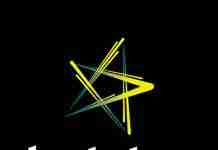When you put up a physical billboard which is a costly affair, you put up a picture you get through a professional artist or a good photographer so that it looks attractive, stands out among competitors and conveys the precise message of your product. Considering that about a third of all searches performed on Google search are Image searches, images on your website is a factor you can’t neglect, take lightly or use just any stock image. This is as far as the factors that are involved in human perception, aesthetics, uniqueness and correlation with their searched objective.

When it comes to search engines as to how machines view images, search engine crawlers, spiders and bots still rely on the text associated with the images to fully understand what the image is and how it relates to the content or the topic of a page which include- The file size, file name, alt attributes, captions, XML sitemap inclusion and structured data on images all play a role in the visibility of images within search engines.
Images are one of the best ways to increase a site ranked in the main search engines of Google, Yahoo, and Bing increasing the visibility of the website in search engines via the “natural” or unpaid search results. Visual search technology is advancing like ‘Cloud Vision’ and ‘Open Graph Protocol (OGP)’ – highlighting the title, description, URL and the image of a website you are sharing via Facebook and SEO designing has to be always updated and evolved.
Tips for designing a good SEO strategy for images built around the attributes which the search engines use for the images:
#1 The image file name, image caption and surrounding text content
Leaving an image with a generic file name like “DSC2016” doesn’t convey description related to keywords, rename it so that it describes what’s in the photo – making sure to use a keyword too. This will help with the ranking of one’s web page, as well as the ranking of the image itself in image search. Google is going to look at this text above and below and around the images to see if it has relevance.
Including logo on your images: It is another promotion of a brand even if the image is seen out of the context of a web page, for example in Google image search results.
Including text on your image: including text on the blog post images to give context to the article it goes alongside. This way it’s easier to include a keyword in the image’s detail that is relevant to both the content of the photo and the blog post.
#2 The “alt” attribute on the image.
Another very important reason to add alt attributes, in addition to accessibility reasons, is for Image Search SEO. The role that alt text (sometimes referred to as an alt tag) plays is to provide users with a description of the visual content, in case they cannot load or see the image. Alt tags provide better image context/descriptions to search engine crawlers. The ALT description is a great place to incorporate serial numbers if applicable, model names and numbers, and other details.
#3 The page title, The page URL and Traditional web ranking factors on the existing URL.
When there are tons of images all on one page, what search bots are looking for is just one or two that are hyper-relevant to the particular topic, which is why most of the images one see doing really well in Google Image Search are the ones that live, not by themselves necessarily, but are the premier image on that particular page. If a page happened to rank well, chances are good that images from that page would also rank in the first few images results.
#4 Image engagement and popularity, dimensions and Embeds of the image
If on a search on Google Images, 12th image down is clicked a lot, Google will move it up, just like in the web results, but sometimes even more so with images. Engagement and popularity, what people scroll to, what they click on, what they click through to, matters quite a bit.
The dimension of the image– Image Search rarely shows unusual image dimensions. So an image which is very, very horizontal and not very vertical, probably wouldn’t do well. Just as a very vertical, not very horizontal one. They tend to look for a sort of 16 by 9, 4 by 3, square images, and sometimes turned on their side so vertically it can work, as well. Search bots are generally not looking for very small images. They also tend not to show gigantic ones, although they sometimes will scale it down.
Embeds– If a visual appears on many different websites and pages, and it’s been embedded multiple times, that seems to have a positive impact.
#5 Optimizing images for SEO and UX optimization (size, speed compression, etc.)
Using responsive images – Responsive web design is the foundation of flexible UI. The ability to seamlessly adapt to the type and size screen being used means websites can always look their best, without compromising on their chosen aesthetics. Alternatively, using multiple resolutions of each image, enabling the browser to select the most appropriate one in any given case.
Load time – A large image can slow down a page’s load time. Slow-loading websites can frustrate visitors and don’t do well in search engine rankings. Naturally, images can have a significant impact on the speed at which a web page loads, so another factor of image SEO is smart image compression.



![[Case Study] EduKart: Shop The Right Course By Carting It](https://www.whizsky.com/wp-content/uploads/2019/02/EduKart-218x150.png)
![[Case Study] How OnePlus Made It To Top In Indian Market](https://www.whizsky.com/wp-content/uploads/2019/02/oneplus-became-premium-brand-in-India-218x150.jpeg)







